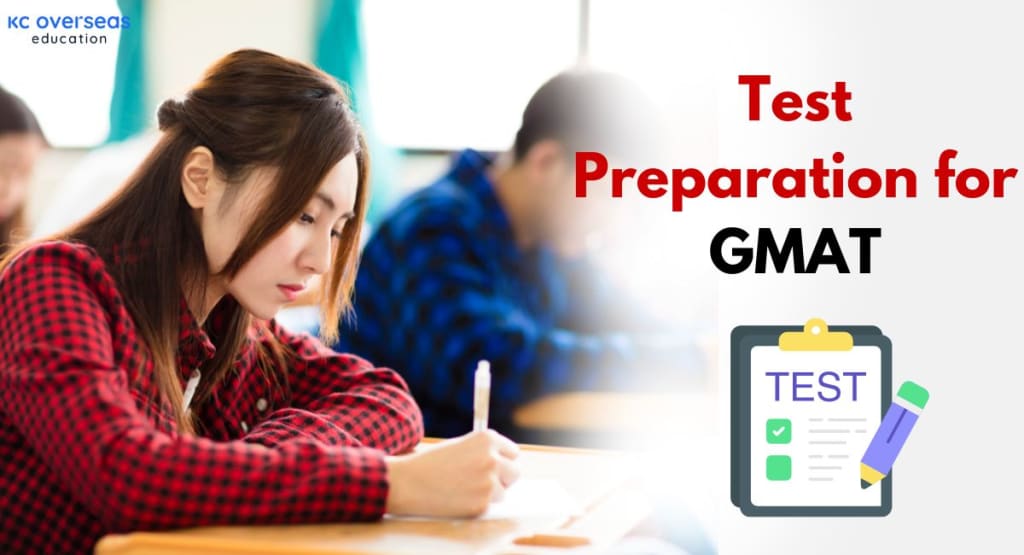Test Preparation for GMAT's Data Insights Section: Understanding the Question Types
GMAT Preparation Tips

The Graduate Management Admission Test (GMAT) is a standardized exam crucial in the admissions process for many business schools and Master of Business Administration (MBA) programs worldwide. One section of the GMAT that often gives test-takers pause is the Data Insights section. This segment evaluates candidates' ability to interpret and analyze data critically, a skill essential for success in business school and beyond.
To excel in the Data Insights section, it's crucial to understand the various question types you may encounter. By gaining insight into each question type and learning practical strategies to tackle them, test-takers can confidently and precisely navigate the Data Insights in this section. Let us get going!
What are the Types of Questions Asked in the Data Insights Section?
Whether you're a seasoned test-taker seeking to sharpen your abilities or a newcomer preparing for your first GMAT attempt, you must thoroughly understand the following aspects of the Data Insights section and its solving strategies before commencing test preparation for GMAT.
• Data Sufficiency Questions
The Data Sufficiency question evaluates the test taker's ability to predict if the information provided with the problem is enough to solve it. In this, you get a question and two separate statements, and you must decide whether each state alone or combined with the other statements is enough to solve the problem. These questions test quantitative reasoning skills and the ability to analyze data logically. To excel in this set, you must emphasize the question's requirements and assess each statement independently.
• Graphics Interpretation Questions
These questions feature a graph or other visual display like scatter lot, x-y graph, pie chart, statistics curve distribution, and bar graph. Test-takers must analyze the visual representation of data and answer questions that assess their ability to draw insights from the graphical data. Understanding the key components of various chart types (such as bar graphs, line graphs, and pie charts) and practicing interpreting them quickly and accurately is crucial.
• Table Analysis Questions
When dealing with these questions, you are presented with a data table that can be sorted into various columns. Below the table is a set of statements, and you need to determine whether each statement is true or false with the help of the information provided in the table. To tackle these questions successfully, it's essential to pay attention to details, practice scanning tables efficiently, and avoid getting bogged down in unnecessary information.
• Two-Part Analysis Questions
As the name suggests, in these questions, you must select the correct answer from the two related parts of the question. Your primary task is to look for the correct answer to each part and remember that all the answers are interconnected in a verbal or mathematical format. To succeed in two-part analysis questions, it's essential to understand the problem thoroughly, break it into manageable parts, and avoid rushing through calculations.
• Multi-Source Reasoning Questions
Multi-Source Reasoning questions present information from multiple sources, such as texts, charts, and tables. As a test-taker, you must synthesize the data from different sources to answer multiple-choice questions effectively. These questions assess critical thinking skills and the ability to integrate information from various sources and draw logical conclusions. To excel in multi-source reasoning, practice identifying crucial information across different formats and discerning relationships between them.
Preparation Strategies for Preparing for this Section
You can incorporate the following approaches and professional GMAT coaching in your test preparations to ensure better scores.
• Familiarize yourself with tables, charts, graphs, and multi-source information to enhance your data analysis skills.
• Develop your ability to draw logical conclusions and identify trends by critically analyzing data in various formats.
• Practice scanning and analyzing data efficiently to answer questions within the allocated time frame, ensuring you complete each exam section.
Finally, with a calm and composed mind, you can achieve the most extraordinary lengths of success in not only a standardized test but also in other exams coming your way in your study abroad journey. A detailed understanding of dos and don'ts can be achieved by seeking guidance from GMAT classes in Nagpur or any other city in India where you reside. Good luck!
About the Creator
Hansie Luke
As an education consultant for study abroad, I have extensive experience in helping students achieve their academic and career goals. I hold a Bachelor's degree in Education and a Master's degree in Counseling.
Enjoyed the story? Support the Creator.
Subscribe for free to receive all their stories in your feed. You could also pledge your support or give them a one-off tip, letting them know you appreciate their work.






Comments (1)
I am glad I took the MAT (Miller Analogies Test) to get into grad school. 60 questions in analogy form and believe it or not my exam was kind of fun to take. GMAT almost sounds like the GRE exam.